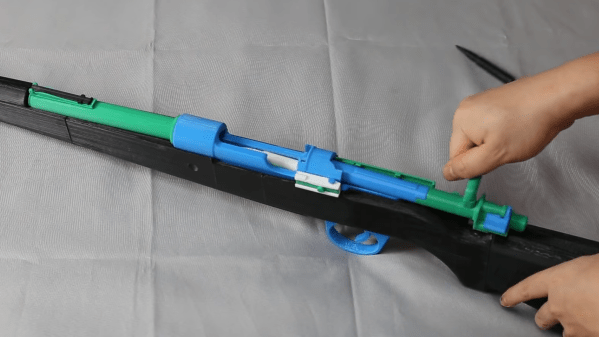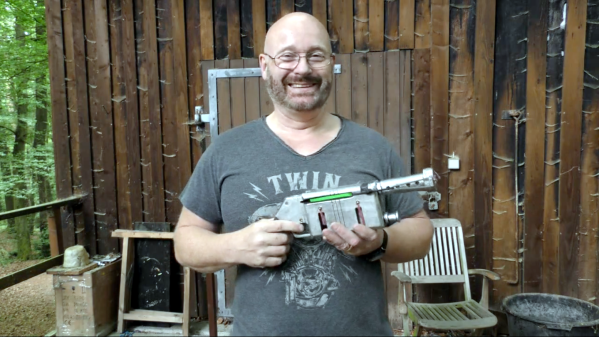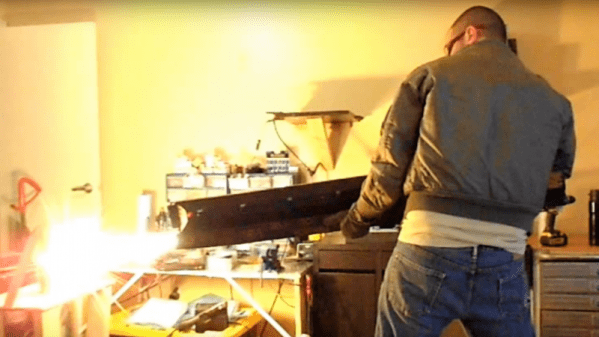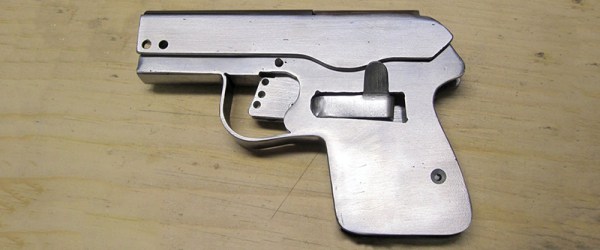Earlier this month, [Austin Haghwout] posted a video on YouTube of a remote controlled quadcopter armed with a semiautomatic handgun. While there are no details of this build, it’s safe to say any reasonably sized quadcopter could be armed in such a manner; just strap a pistol to the frame, add a servo, and connect the servo to the RC receiver. We don’t think this is the first time it’s been done, but has garnered the most attention.
There is nothing novel about mounting a handgun to a quadcopter. Anyone with any experience with RC flying could replicate this build, and the only interesting part of watching a video of a quad firing a gun is seeing how the flight controller reacts to the recoil. However, in the pursuit of the exploitation of a fear of technology, this video has gone viral.
The Verge calls it, ‘totally illegal’, while The Christian Science Monitor asks how it is legal. Wired posits it is, ‘most likely illegal,’ while CNET suggests, ‘surely this isn’t legal.’ In a rare break from reality, YouTube commentors have demonstrated a larger vocabulary than normal, calling the build, ‘felonious.’
With so many calling this build illegal, there should be someone who could point out the laws or regulation [Austin Haghwout] is violating. This information is surprisingly absent. In a Newsweek post, a representative from the Bureau of Alcohol, Tobacco, Firearms, and Explosives is quoted as saying:
“ATF has reviewed the video with local law enforcement and other federal agencies. It does not appear that the device violates any existing firearms regulations…”
The Associated Press reports no state laws were broken by [Austin]. With the BAFTE and Connecticut State Police both signing off on this build, the issue of jurisdiction becomes more pronounced. How, exactly, is a gun mounted on a quad illegal?
The answer, as with all things involving quadcopters, comes from the FAA. We could find no regulations explicitly banning handguns on remote controlled quadcopters, but of all stories and posts on [Austin]’s handiwork, this is the closest anyone has come to providing the framework for calling this build illegal:
No pilot in command of a civil aircraft may allow any object to be dropped from that aircraft in flight that creates a hazard to persons or property. However, this section does not prohibit the dropping of any object if reasonable precautions are taken to avoid injury or damage to persons or property.
-FAR Part 91 Sec. 91.15
That’s it. The closest anyone has come to providing a reason why a semiauto quadcopter is illegal: because the cartridge (and bullet), are ‘dropped’ from a quad. The Feds charging [Austin] with “dropping” a bullet from a quadcopter is like taking down [Al Capone] for Income Tax Evasion. The difference being that [Al] was a notorious criminal who had obviously harmed a large swath of people and [Austin] doesn’t seem to be harming anyone.
Although [Austin]’s video of a gun toting quad is only fourteen seconds long, a few reasonable assumptions can be made about his small experiment in flying firepower. The video shows the quad hovering a few feet above the ground. This is surely allowed by the recently published safety guidelines for sUAS users. The gun itself appears to be firing into an offscreen hillside – a sensible precaution. If the only justification for the FAA’s investigation of [Austin]’s video is FAR 91.15, he’s on easy street.


















